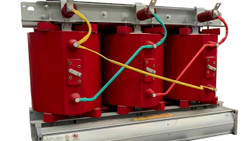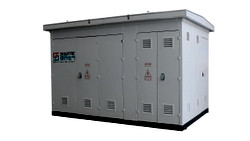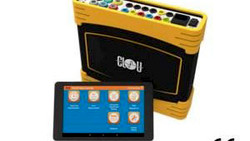The landscape of renewable energy is rapidly evolving, with new technologies emerging that promise to revolutionize how we generate and consume power. As the urgency of climate change mounts, these innovations offer a beacon of hope, providing cleaner, more efficient energy solutions that could reshape our world. This article delves into the cutting-edge advancements across various renewable energy sectors and their implications for a sustainable future.
Solar Energy: Advancements in Solar Panel Technology
Solar power is at the forefront of renewable energy innovation. Engineers are pushing the boundaries with new photovoltaic (PV) materials such as perovskites, which have the potential to surpass the efficiency of traditional silicon-based solar cells. Breakthroughs in organic photovoltaics (OPVs) are also paving the way for transparent and flexible solar panels, which can be integrated into windows or curved surfaces, opening up countless new applications.
The concept of solar skins is another exciting development. These are essentially aesthetic overlays that allow solar panels to blend seamlessly with the roof of a home or building, encouraging wider adoption by those who might otherwise be put off by the appearance of traditional panels.

(symbol image, credit CLOU)
Wind Energy: Taller Turbines and Floating Wind Farms
Wind energy is not far behind in its march toward innovation. The development of taller wind turbines with longer blades has dramatically increased their capacity to capture energy, even in areas with less wind. The emergence of floating wind farms is particularly revolutionary for offshore energy production, vastly expanding the suitable locations for wind turbines beyond shallow waters.
Another area of progress is in bladeless wind energy generation, where structures use the oscillation of wind to generate power without the traditional turbine structure, reducing maintenance and potentially mitigating the impact on wildlife.
Hydroelectric Energy: Advanced Turbine Designs and Underwater Power Plants
Hydroelectric power is experiencing a renaissance with advanced turbine designs that are fish-friendly and capable of operating efficiently at low water velocities. This greatly reduces environmental impact and extends hydroelectricity's viability to previously unsuitable locations.
Additionally, kinetic hydro turbines, which harvest energy from flowing water without the need for large dams or reservoirs, are showing promise for small-scale power generation in rivers and streams.
Geothermal Energy: New Drilling Techniques and Enhanced Geothermal Systems
Geothermal energy—tapping into the Earth's heat—is seeing advances with enhanced geothermal systems (EGS) that exploit hot rock resources deep underground. New drilling techniques, inspired by those used in the oil and gas industry, are allowing access to geothermal resources from greater depths, expanding the potential geothermal map far beyond traditional hotspots.
Biomass Energy: Advanced Conversion Technologies and Bio-based Materials
In the realm of biomass, the development of advanced conversion technologies is enabling the efficient transformation of waste and non-food crops into bioenergy and bioproducts, reducing competition with food resources and issues related to land use.
Scientists are also exploring the use of algae as a source of biomass energy, given its high yield and ability to grow in a variety of environments, including wastewater.
Energy Storage: Advanced Battery Technologies and Grid-Scale Energy Storage
The Achilles' heel of renewable energy—its intermittency—is being addressed through remarkable strides in energy storage. Lithium-ion batteries are yielding ground to solid-state batteries that offer higher energy density, safety, and longevity. Meanwhile, flow batteries are being scaled for grid applications due to their ability to store large amounts of energy for extended periods.
Innovative concepts like gravity storage, which uses excess energy to lift massive weights in a deep shaft, releasing energy as they descend, are being tested as potential grid-scale solutions.
Green Hydrogen: A Clean and Versatile Energy Solution
Green hydrogen is hydrogen that is produced using renewable energy sources, such as solar and wind power. Green hydrogen is produced by splitting water into hydrogen and oxygen using electrolysis. The electricity used to power the electrolysis process comes from renewable energy sources, which makes green hydrogen a clean and sustainable fuel.
Green hydrogen can be used to power fuel cells, which are devices that convert the chemical energy of hydrogen into electricity. Fuel cells are used to power a variety of vehicles, including cars, buses, and trucks. Fuel cells can also be used to power other devices, such as laptops and smartphones.
Green hydrogen is a promising alternative to fossil fuels because it is clean, sustainable, and versatile. Green hydrogen can be used to power a variety of vehicles and devices, and it can be stored and transported easily.
Smart Grids and IoT: Advanced Technologies for Managing Renewable Energy
The integration of renewable energy into the grid is being streamlined by the Internet of Things (IoT) and smart grid technologies. These systems utilize sensors and analytics to predict energy supply and demand, balance loads, and even automatically adjust to optimize energy flow and storage.
Blockchain technology is also emerging as a means to manage energy transactions on the grid, facilitating peer-to-peer energy trading and enhancing transparency.
Transportation: Electric Vehicles and Advanced Biofuels
The transportation sector's shift to sustainability is accelerating with electric vehicles (EVs) becoming more mainstream and affordable. Breakthroughs in battery technology are largely to thank, with companies racing to extend range and reduce charging times.
Simultaneously, advanced biofuels derived from non-food sources are providing renewable alternatives for aviation and shipping, where electrification is more challenging.
Energy Efficiency: Smart Buildings and Cities
Energy efficiency is being targeted through innovations in building design and urban planning. Smart buildings equipped with automated systems can optimize energy consumption for heating, cooling, and lighting. Cities are also adopting green infrastructure, such as vertical gardens and green roofs, to reduce the urban heat island effect and improve energy efficiency.
Carbon Capture and Utilization: Turning CO2 into a Valuable Resource
Carbon capture and utilization (CCU) technologies are turning a waste product—CO2—into a resource. By capturing emissions and converting them into materials like plastics and concrete, we can both mitigate climate impacts and reduce reliance on fossil fuels for raw materials.
Advanced Nuclear Power: Next-Generation Reactors
Nuclear energy is undergoing a transformation with the development of small modular reactors (SMRs) and next-generation designs that promise enhanced safety and efficiency. These reactors can be constructed off-site and installed modularly, reducing costs and construction times.
Additionally, research into fusion energy continues, with the potential to provide a nearly limitless source of power without the long-lived radioactive waste associated with conventional nuclear fission.
Space-Based Solar Power: Harnessing the Power of Space for Earth
Space-based solar power (SBSP) represents an ambitious frontier in renewable energy. By placing solar collectors in geostationary orbit, they could capture solar radiation uninterrupted by Earth's day-night cycle or atmospheric conditions, providing a constant energy source. Though technical and financial hurdles remain, the concept of SBSP is gaining traction as a potential long-term solution for global energy needs.
Takeaway
The renewable energy sector is bustling with innovations that are rapidly changing the landscape of power generation and consumption. From advances in solar and wind technology to groundbreaking energy storage solutions, these developments are paving the way for a cleaner, more sustainable future. The transition to smart grids and the electrification of transportation are integral to this shift, as are efforts to improve energy efficiency and develop carbon capture strategies.
As these technologies mature and scale up, they promise to make renewable energy more reliable, cost-effective, and accessible, enabling a significant reduction in global carbon emissions. The future is indeed bright for renewable energy, offering a pathway to a more sustainable and energy-secure world.
If you have any inquiries or need further information about how CLOU can support your integration activities for renewable energy, don't hesitate to reach out to us. Our team of experts is here to assist you and provide tailored solutions to help you navigate the exciting world of renewable energy with ease.
We hope you found this article informative and inspiring. Your valuable thoughts and comments are always welcome as we strive to deliver content that resonates with our readers.
Until then, keep shining bright like a solar panel on a sunny day!





All comments are moderated before being published. Inappropriate or off-topic comments may not be approved.